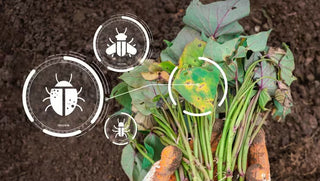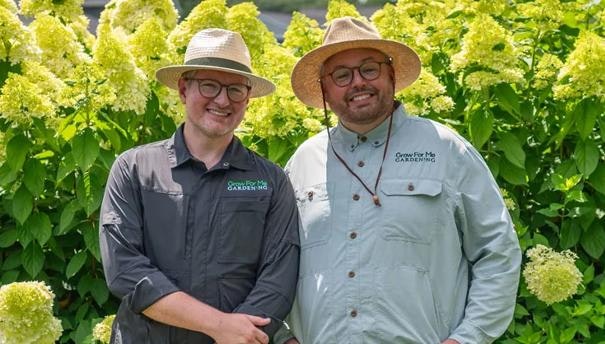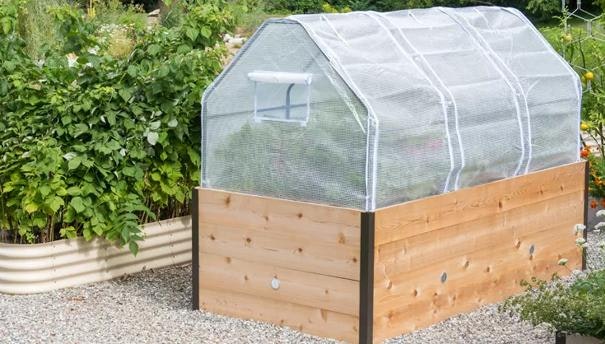Plant damage caused by garden pests or diseases can be disheartening, but this guide is here to arm you with knowledge. We'll explore organic methods for prevention, detection, and mitigation, including integrated animal and insect pest management practices. Together, we can ensure your garden thrives and produces.
Preventing Problems from the Start
The Right Plants in the Right Places
They say an ounce of prevention is worth a pound of cure, and a healthy garden starts with the right plants in the right places. Choose native plants that are suited to your local climate (know your average temperatures, rainfall amounts, and frost dates) as well as your soil conditions. Research is critical; look for disease-resistant varieties known to perform in your area. If you’re in New England, visit any of our garden centers for expert plant selection advice; if you aren’t, consult a gardener through our site.
Diversity in planting strengthens your garden’s resilience to damage and disease. Different plants in proximity can protect each other by creating a balanced ecosystem. This strategy, known as companion planting, can naturally deter pests and promote health.
Common companion plants for pest management:
- Marigolds to deter pests like aphids, whiteflies, nematodes, and mosquitoes
- Nasturtiums to deter pests like whiteflies, squash bugs, and cabbage loopers
- Basil and other herbs to deter pests like mosquitoes, flies, aphids, tomato hornworms, asparagus beetles, and thrips
The Importance of Soil Health & Preparation
Soil health is the backbone of successful gardening. Healthy soil supports robust plant growth and helps prevent diseases, so preparing and enriching your soil is essential for nurturing healthy plants. Test your soil to understand its pH and nutrient levels. Knowing your soil’s composition allows for better amendment decisions. Adding organic matter like compost improves soil structure and fertility, encouraging strong root systems.
Here's a quick checklist for soil preparation:
- Test soil pH and nutrient levels.
- Incorporate organic matter like compost or manure.
- Ensure adequate drainage and structure.
- Rotate crops and use cover crops to enhance soil quality and reduce disease.
These practices prevent nutrient depletion and support beneficial soil organisms. Each step in soil preparation is a step toward a vibrant, productive garden.
Watering Considerations for Healthy Plants
Proper watering and irrigationtechniques help prevent plant damage and promote health. Overwatering can lead to root rot, while underwatering stresses plants. The key is to water deeply but not too often. This encourages deep root growth and enhanced resilience. Check soil moisture with your finger; if it's dry an inch below the surface, it's time to water. Morning is the best time to water your plants; this timing allows moisture to soak in and reduces evaporation. Water plants at the soil line, rather than from above, to minimize the risk of fungal disease. Pay attention to particular plant needs; some may require more frequent watering during hot spells. Adjust your approach based on season and plant type for optimal results.
Plant Spacing for Air Circulation & Disease Prevention
Plant spacing matters. Tight arrangements mean poor air circulation, which can exacerbate humidity and cause problematic fungal growth. Moreover, well-spaced plants have better access to sunlight and nutrients, resulting in more vigor and less competition for resources. When planning your garden, always consider the mature size of plants.
Pruning & Mulching: Best Practices for Plant Health
Pruning is critical for maintaining healthy and attractive plants. By trimming dead or overgrown branches, you can prevent disease spread and encourage new growth. Effective pruning can also shape plants to improve air flow and light penetration.
Mulching serves multiple purposes in plant care. It conserves soil moisture, regulates soil temperature, and suppresses weeds. Additionally, mulching improves soil structure as it breaks down, providing nutrients over time.
Key best practices for pruning and mulching include:
- Use sharp, clean tools to avoid injuring plants or spreading disease.
- Prune during dormant periods for most species.
- Apply a layer of organic mulch around plants, avoiding direct contact with stems.
Regular pruning and strategic mulching contribute to a thriving garden. Together, these techniques support plant growth and strengthen defenses against pests and diseases.
Understanding Plant Health & Signs of Damage
Recognizing early signs of damage is crucial to a healthy garden. Observing your plants regularly can prevent small issues from becoming serious problems. In diagnosing, visual cues are often the first indicators of stress. Look for holes, yellowing or browning leaves, spots or patches, leaf drop or curling leaves, slow or stunted growth, and wilting despite adequate water. These signs indicate issues like nutrient deficiencies, pest infestations, or disease. Use your senses beyond sight; feel the soil's moisture and smell for any unusual odors. In doing so, you can uncover hidden problems and gain insights for maintaining a healthy garden. A proactive approach to garden health involves addressing stress factors early. Know your plants' typical appearance and behaviors under favorable conditions; sudden changes often indicate issues needing attention.
Identifying & Controlling Common Plant Diseases
Plant diseases can wreak havoc in your garden if left unchecked. Early identification is key to managing these threats. Observing changes in your plants' appearance helps catch problems before they spread widely. Typical signs of plant disease include discolored leaves, wilting, and unusual spots. Fungal infections often show as powdery coatings or dark blotches. Bacterial diseases might cause wet, slimy patches. Viruses can distort growth and cause color changes. Common plant diseases to watch for include powdery mildew, blight, rust, leaf spot, and root rot.
Effective control measures include removing and destroying affected plant parts. Rotate crops to disturb any lingering pathogens in the soil. Use a copper-based fungicide as needed to prevent fungal spores from taking hold and spreading. Garlic and baking soda sprays can also help stop fungal infections; these treatments can manage disease outbreaks while minimizing environmental impact. Regular garden inspection and conscientious tending lay the foundation for healthy, disease-free plants. Being proactive ensures that your garden remains vibrant and productive, year after year.
Plant Disease Resources
Be sure to also reference ourPest & Disease Encyclopedia.
An Integrated Approach to Pest Management
Integrated Pest Management or IPM is a holistic strategy for controlling pests in a sustainable way.1 It combines multiple tactics, focusing on prevention and balance rather than just extermination. This method not only reduces reliance on chemical pesticides but also promotes holistic environmental health.
IPM starts with understanding your garden's ecosystem. By monitoring pest populations and identifying beneficial insects, you can make informed decisions. This approach includes setting thresholds and determining when action is necessary. By intervening only when pest levels reach harmful thresholds, you minimize unnecessary disruptions.
This method may incorporate natural predators, habitat manipulation, and resistant plant varieties. If and when chemical measures are required, IPM emphasizes the use of less harmful options. Implementing IPM requires regular assessment and adjustment, ensuring a balance between plant health and pest control. Ultimately, this sustainable practice fosters a resilient garden that thrives with fewer interventions.
Physical Barriers for Humane Animal Pest Control
Physical barriers are effective, non-chemical pest solutions. Row covers, cloches, and fencing (like our beloved Chicken Wire Collection) can protect young plants from hungry wildlife including deer, rabbits, moles, and rodents. Such barriers prevent pests from reaching plants while allowing sun, air, and rain to nourish them. Combine pest management strategies to achieve the best results.
Animal Pest Control Resources
Be sure to also reference our Pest & Disease Encyclopedia.
Animal-Specific Articles
Natural Methods for Insect Pest Control
As with animal pests, barriers like row cover and netting should be a first line of defense. Additionally, inviting beneficial insects, birds, and other natural predators to your garden is an organic and effective approach. Creating a habitat with diverse plant species provides shelter and food, attracting helpful creatures and critters to your garden. To boost the presence of beneficial insects, consider planting native species known to attract them. Additionally, avoid pesticides and embrace organic gardening practice to further support these allies and their ecosystem. If you must call in reinforcements consider neem oil, which acts as a natural insect repellent. It's effective against many pests and easy to use.
Insect Pest Control Resources
Be sure to also reference our Pest & Disease Encyclopedia.
Insect-Specific Articles
Indoor Gardening Pest & Disease Resources
Be sure to also reference our Pest & Disease Encyclopedia.
Wash Your Houseplants to Prevent Pest Problems
Prevent Seedling Disease with a Fan
Organic gardening offers many options for keeping pests and diseases at bay without harming the environment. Natural solutions are effective and safer for your family, pets, and beneficial insects. Embracing organic methods supports sustainable gardening practices. By integrating these organic solutions, you can maintain a lush, thriving garden alongside your commitment to earth-friendly practices.




